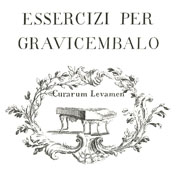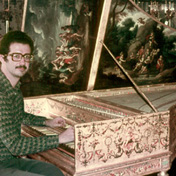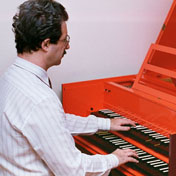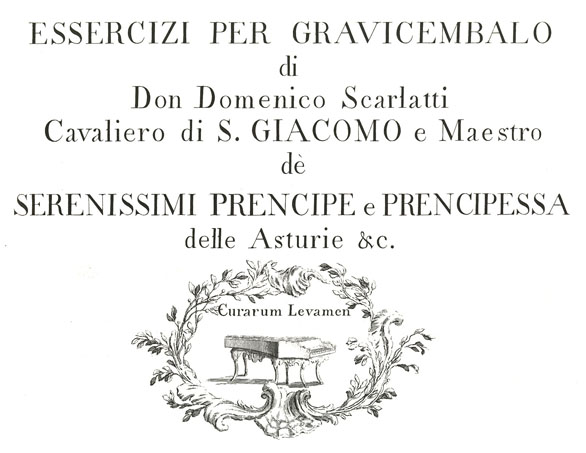Excerpts from this book:
FINGERING AND DOMENICO SCARLATTIThe goal of performing on historical instruments is to try and play an early music score with the overall sound, articulation, ornamentation and other subtleties the composer had in mind. To achieve this, performers of period instruments should play them using a period technique. For a long time now this has been standard practice in most instruments, but much less so in early keyboards, and in the particular case of Domenico Scarlatti's keyboard technique there is some additional confusion. Let us try to dispel it with a short historical account. ...
... Domenico Scarlatti ... No extant fingerings by himself or his entourage are known, but at the time he composed the Essercizi (most likely well before their publication c.1738) his technique is likely to have been much similar to the one shown in a piece fully-fingered by his father and teacher Alessandro, dating from the 1720's. From this source we know that Alessandro Scarlatti was mostly following the common Baroque fingering system, with one important exception: the right hand, while still using the traditional pairing fingering for slow scales, for fast scales instead descended passing long fingers over the thumb, symmetrically with the traditional left hand technique. In this edition this can be seen ...
THE ORIGINAL EDITION
The original edition is undated, but it is apparent that it was prepared and printed between April 1738, when the composer was awarded by the king of Portugal the "Cavaliero di San Giacomo" (mentioned in the four introductory pages worth of the customary eulogy of the king), and February 1739, when the edition was first advertised for sale, in London. See below the title page..
...
OUR EDITORIAL PROCESS
The score ... is a digital facsimile of the original edition of the Essercizi ... in the Public Domain ... free from the Romantic additions found in many later editions, such as anachronistic expression marks and piano fingerings. ...
For this edition the present author has written the suggested fingerings by hand directly onto a printout of the facsimile, which was then scanned. Although playing from this antique edition is both moving and exhilarating, some players ... will prefer to play our fingerings on a modern edition. For this reason, permission is hereby granted, to any owner of the present eBook, to manually copy this edition's fingerings into the his/her own copy of a different edition. ...
FINGERING PRINCIPLES AND NOTATION
... We have followed here a sensible approach: a finger number is added to the score only if it changes the obvious diatonic sequence ... This diatonic convention applies to scales, counterpoint, ornaments and arpeggios. ...
(excerpt from the score of the Sonata XX in E major, page 68, first three bars)
. . .




